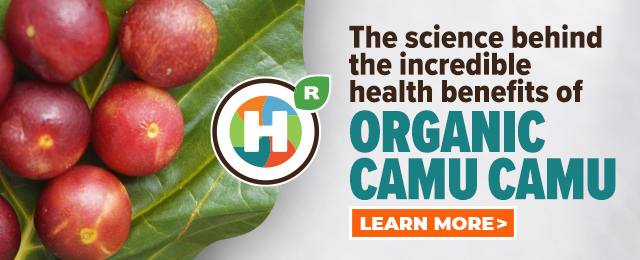
Bananas Are Dying, Killed by Corporate Monoculture
Monday, June 02, 2008 by: Heidi Stevenson
Tags: bananas, health news, Natural News
- Microsoft cuts ties with NewsGuard, a so-called "media literacy" tool that was actually just a tool for censorship and spreading lies
- The loss of pollinators: The hidden ecological cost of WIND TURBINES
- Breaking: Senate confirms Robert F. Kennedy Jr. as HHS Secretary, signaling a new era for public health
- If you thought the NFL would skip a chance to WORSHIP SATAN on the big stage at the SUPERBOWL HALFTIME SHOW, you were dead wrong
- Unveiling the FDA’s DECEPTION: The hidden truth behind Pfizer’s vaccine approval
- Musk's DOGE Army saves taxpayers $1 billion as they storm “WOKE” Department of Education
- BILLION-DOLLAR BOONDOGGLE: Obama’s Ivanpah solar plant exemplifies green energy failure and the cost of government overreach
- How ditching modern cooling can save the planet and transform your health
- The hidden link between Big Ag and Big Pharma: How our food and health systems keep us sick
- Robert F. Kennedy Jr. becomes new HHS Secretary, signaling REVOLUTIONARY shift in public health accountability
- Jim Marrs’ “Population Control” warns about the globalist plot to reduce the world population to just 500 million
- Fossil fuels rescue New England from winter's grip amid failed “net zero” push
- CIA document reveals 1950s plan to manage UFO sightings and public perception
- Ozempic users experiencing sudden blindness; experts warn of serious side effects
- The COVID VACCINE INJURIES were planned so the DISABLED MASSES would become less self-sufficient and forced to rely on BIG GOVERNMENT
- PBS shutters DEI office in wake of Trump’s executive order
- Zander C. Fuerza’s “Masters of Deception” challenges the official narrative surrounding the 9/11 attacks
- Hegseth delivers reality check on Ukraine: U.S. can't keep funding war, calls for realistic peace deal
- Chemotherapy found to increase the number of tumor cells circulating in the blood, spreading it to previously unaffected areas
- The new American dream: $500,000 nuclear bunkers and the fear of WWIII
- Big Banks shift the burden of losses to taxpayers through the Federal Reserve in the form of BAILOUTS
- Stan Johnson on the Health Ranger Report: Henry Gruver’s 2016 vision of second Trump term becomes reality in 2024
- Mike Adams Sermon 42: God’s superfruit FIGS can fight warts, staph infections and cancer
- Experts warn: Centralized digital currencies could be used to control how people behave
- Trump is taking on the media, exposing defamation and WINNING BIG
- Unearthing Christianity’s hidden history: An amulet’s 1,800-year-long secret unveiled
- Top 10 foods that BOOST DOPAMINE and help you stay focused, fit, positive and motivated
- Essential home security tips: Protecting your property without electricity
- Russia signals willingness to negotiate peace deal with Ukraine at neutral site in SLOVAKIA, but Ukraine rejects it
- HYSSOP: What research reveals about the health benefits of this ancient holy herb
- EPA advisor admits the agency is funneling billions to climate groups ahead of Trump’s return to White House
- Biden announces additional $500M military aid for Ukraine as California wildfires displace 70,000 residents
- Global tensions, natural disasters and the looming shadow of world war - all predicted by Mike Adams and Steve Quayle three years ago
- Is America's "giant debt factory" Federal Reserve setting us up for an economic nightmare?
- Cannabis found to reduce the symptoms of IBD
- U.S. to sell $300 million upgrade program for South Korean navy’s destroyers
- EPA advisor admits the agency is funneling billions to climate groups ahead of Trump’s return to White House
- HYSSOP: What research reveals about the health benefits of this ancient holy herb
- Global leaders unite to clamp down on “misinformation” with UN-backed Cascais Declaration
- I Want My Bailout Money – new song released by Mike Adams
- New BRICS banking system will render Western sanctions on Russia USELESS
- Essential home security tips: Protecting your property without electricity
- Beyond consequence
- Homeless crisis in America GETTING WORSE as government continues to spend hundreds of billions on foreign aid
- Mike Adams Sermon 42: God’s superfruit FIGS can fight warts, staph infections and cancer
- Texas border officials discover unaccompanied 4-year-old girl smuggled from Central America
- Female GOP senators defend Pete Hegseth amid MSM smears
- Health Basics: Top 10 reasons to AVOID ALL VACCINES
- House GOP demands investigation into FEMA’s ignoring of pro-Trump rural areas in desperate need of aid
- Prepper recipes: How to make delicious acorn pancakes
- Ukraine pushes for NATO membership as lawmaker calls for NUKES
- Acorns shown to have neuroprotective properties
- Incoming FCC chairman Brendan Carr prepping for battle against censors: “Censorship is about stopping ideas”
- Secret Service agents open fire on suspected carjackers near Treasury Secretary Janet Yellen's residence in D.C.
- Red Cross issues warning to stop blood plasma donations from vaccinated people
- Scientists confirm: GENIUS brain function can be spontaneously unleashed in humans without any apparent cause
- DATA: England’s vaccinated population had close to one million deaths in 23 months; unvaccinated population had less than 61,000 deaths over the same period
- HYSSOP: What research reveals about the health benefits of this ancient holy herb
- Arizona residents drive entire Maricopa County Board of Supervisors out of meeting after serving them for TREASON
- Fully vaccinated about to see “tsunami” of illness and death, warns virologist
- Today I asked our AI language model “Neo” about which phytonutrients or phytochemicals can block the spike protein related to SARS-CoV-2 … Here is what it answered…
- BREAKING: 2025 NDAA authorizes mandatory military draft of WOMEN across America… as Pentagon pursues global NUCLEAR war with both Russia and China at the same time
- We are building the infrastructure of human freedom… Brighteon.AI is the next launch that will put life-altering LLM technology into your hands for free
- Michael Yon warns of a ZIONIST TAKEOVER in Trump’s second administration
- ENGINEERED FAMINE: Oregon starts SHUTTING DOWN small farms “to protect the people”
- NASA admits that climate change occurs because of changes in Earth’s solar orbit, and NOT because of SUVs and fossil fuels
- Ozempic and Wegovy weight loss drugs are injectable LIZARD VENOM PEPTIDES that may unleash a devastating wave of organ failure… side effects align with symptoms of SNAKE BITES
- These 13 countries just signed an agreement to engineer a global FAMINE by destroying food supply
- Careless Whisper: AI-powered transcription tool being used by hospitals found to invent chunks of text no one ever said
- Two containers with completed ballots fall out of truck in Florida
- BBC staffers accuse media outlet’s executives of instituting bias in Gaza coverage, claiming favorable treatment of Israel
- Casual restaurant chain TGI Fridays files for BANKRUPTCY
That change foretold what's now coming -- the complete death of bananas. No, this is not hyperbole. Bananas are dying, and their death is a precursor of what's to come if we continue to accept corporate farming. But first, back to the impending loss of bananas.
We tend to think of bananas as a single species with no more than one or two variations on the theme --something like oranges, lemons, limes, and grapefruits that are all variations of a single species. That, though, is far from the truth. Until the mid-eighteen hundreds, most bananas grew wild and local people ate them, though some local cultivation existed. There was a huge variety. Some were sweet and some sour. Some were creamy, while others had a bit of crunch. Some were yellow, but others were red or purple. Today, most of that variety is lost.
Chiquita's History
During the 1870's, Minor Keith was a young man from a wealthy railroad company who went to Costa Rica to help build a national railroad. He and other relatives accomplished the task at the cost of 5,000 workers' lives. He also started planting bananas, a crop that was gaining popularity in the U.S., on the easements along the railway. The Costa Rican government could not make payments on its railroad loans from British banks. Because of his wealth and connections, Keith was able to raise the money to finish the job, largely by negotiating a significant decrease in the interest rate, from 7% down to 2.5%. This put him in the debt of the dictator, whose daughter he had married, so he was granted 800,000 acres of tax-free land along the railroad, where he'd been planting bananas, along with a 99-year lease on the railroad's operation along that route.
Yes, it's just amazing what can be accomplished through birth into wealth combined with an utterly unscrupulous nature. The corporation that came out of this was United Fruit, now known as Chiquita. It had an insatiable appetite for profits, which it was willing to satisfy at virtually any cost to the people, the countries it occupied, and nature. Their typical modus operandi was, from the very beginning, to force their way into a poor nation, slash and burn to create banana plantations, and provide slave wages to the natives. Virtually any means was used to lop off anything that got in the way of profits.
It was this -- the behavior of Chiquita -- that led to the term Banana Republic, coined by the novelist and short story writer, O. Henry. It was not a term of derision for the countries, but a term of sympathy for their enslavement by United Fruit. In the February 2008 issue of The Nation, the author states that United Fruit "was truly a terrorizing company -- a kind of Halliburton, McDonald's, Nike, and Archer Daniels Midland all rolled into one. United Fruit set the precedent for the propaganda, exploitation and imperialism of modern-day corporate plunderers."
Panama Disease
Then in 1903, what should have brought these practices to a screeching halt, worsened the tale. A fungus named Fusarium oxysporum, commonly known as Panama disease or Agent Green and sometimes called Sigatoka, started to attack the monoculture crop, the Gros Michael variety. Since these crops were not grown from seed, but instead were all clones, the result of planting only from rhizomes (underground stems), none of the plants stood a chance once one had been infected.
Of course, United Fruit did what any giant of monoculture would do. They dumped tons of chemicals on the crops. It didn't work. The plants continued to die. Though advised that the only real solution was to plant a wide range of banana varieties, United Fruit's only real concern was the short term bottom line. Their first solution was to find more impoverished nations with the right climate and repeat what they'd done to Costa Rica, and by that time, many other nations.
Sigatoka Disease
The company's own adherence to short term profit, even over its own long term survival, resulted in a refusal to engage in even the most basic techniques to avoid carrying the infection to previously-unaffected locations. The chemicals slowed the progression on Panama disease, but didn't stop it. Then, in 1935, Sigatoka, an even more virulent fungus, showed up. This was the death-knell of the Gros Michael banana.
By 1960, the Gros Michael banana was extinct. United Fruit, though, was lucky. They found another variety, the Cavendish, that was resistant to the fungus infections. Note, though, the word resistant. They were not immune.
Naturally, Cavendish bananas replaced Gros Michaels. United Fruit -- by then known as Chiquita -- didn't learn any good lessons. They continued the same practices of monoculture clone planting, massive chemical use, and moving to new countries as the bananas in old ones died.
Examples of United Fruit-Chiquita Methods of Operation
Colombian Strike Against United Fruit
In 1928, thousands of United Fruit workers went on strike, demanding a six-day work week, an eight-hour day, medical care, and payment in real money, rather than company scrip that could only be spent at the company store. They demonstrated peacefully in a town square. After a five-minute warning, the United Fruit-controlled Colombian government's military opened up with machine guns, killing an unknown number. United Fruit itself estimates at least 1,000 were killed, but the real extent of the massacre will never be known, since most of the bodies were probably dumped in the sea and buried deep in the forest. In other words, the incident was covered up.
Bribes
After the president, Eli Black, committed suicide in 1975, the corporation, now called United Brands after a flurry of corporate buyouts and mergers, was subjected to an investigation, which resulted in a tale of bribery. The puppet president of Honduras had been given $1.25 million and promised another equivalent amount in exchange for reduction of export taxes. Then, it was discovered that European officials had received $750,000 in bribes.
In 1978, United Brands admitted that it had given $2.5 million to Honduras's economy minister. For that, they were fined $15,000.
Poisons
A nematode pesticide developed by Dow Chemical, dibromochloropropane (DBCP), was banned in the U.S. in 1979. DBCP causes cancer, is a neurotoxin known even to cause birth defects, and causes severe reactions from contact with it. It kills fish and many other aquatic creatures.
United Brands' response was to continue using DBCP in other countries.
Guatemalan Coup
Throughout its history, United Fruit-Chiquita operated a scorched earth policy against anyone and anything that stood in the way of short term profits. Nothing seems to have been too evil.
Encouraged by Chiquita, the CIA carried out a 1954 coup, which overthrew the legitimate Guatemalan government. Jacobo Arbenz, the president, had implemented an act much like the United States' Homestead Act, which allowed uncultivated portions of plantations -- code word for a monoculture banana tract -- to be appropriated for the people's use. His goal was the same as the Homestead Act, to create a nation of landowners. The corporate landowners were paid the tax appraisal value of the land.
Connections With Colombian Narcotics Traffickers
Colombia's military government is propped up by the United States. When the U.S. itself doesn't take matters into its own hands, local paramilitary narcotics gangs do the job of murdering union leaders and workers who have tried to organize, especially in banana fields. Since 1985, at least 4,000 have been killed or have disappeared during strikes or while organizing workers.
Known collaborators of these gangs include Chiquita. The attorney for a lawsuit filed in 2007 by some of the victims' families stated, "It was about acquiring every aspect of banana distribution and sale through a reign of terror." Chiquita claimed that it had been paying protection money to protect its employees, who they claim had been threatened if they didn't pay. The company does not explain how this makes sense when the only employees killed were those involved with union organizing.
Propaganda
One of the core techniques of any successful agribusiness corporation is propaganda. United Fruit was a master.
For a nominal fee, in 1962 American schools were provided with packages that contained lessons about bananas, information about Central American countries (obviously not delineating its own activities in destroying them), banana recipes nicely formatted into a folder, and teaching tools, including a wall chart, movies, and a teacher's manual on how best to use them.
That same year, the Chiquita logo was affixed to bananas and an advertising campaign to convince the public of their superiority was launched.
Discarded bananas were turned into a profit center. In 1966, a factory was built in Honduras to produce banana puree from discards. It took some time to realize a profit, but by the 1980's banana puree started to show up in ice cream, yogurt, and other similar foods. Just think -- that prepared food with the listed ingredient of banana was very likely made from rejected bananas.
In 1967, after Del Monte entered the banana business, United Fruit gave 90,000 full color recipe cards, along with peanut butter sandwiches to U.S. schools.
Of course, when propaganda fails and bad PR is about to be produced, Chiquita falls back on the time-honored technique of suppression. In 1998, a particularly ugly bit of Chiquita's activities were about to be exposed by the Cincinnati Enquirer. The investigative reporter, Mike Gallagher, dug up clear documentation showing:
* Chiquita controlled several supposedly independent banana companies to hide assets.
* Chiquita continued to use banned pesticides, in spite of an agreement with environmentalists.
* Chiquita security guards used brute force against employees.
* Chiquita had the residents of a village evicted and their town bulldozed by calling in the Honduras military.
The technique used by Chiquita to get the Cincinnati Enquirer to pull the story were to ruin the career of Mike Gallagher. He was accused of hacking into their e-mails. As a long term and well respected investigative reporter, one must wonder why he'd have used such a klutzy method. It's surmised that he likely got the information from employees, who could have been at risk had he told the truth. Of course, this method of gaining information is time-honored by the profession. One of Edward R. Murrow's most significant documentaries, "Factories in the Field", was produced through such techniques. "History of the Standard Oil Company" by Ida Tarbell would never have been made, either.
By using the threat of lawsuit against a newspaper that had significantly less money to defend itself or its reporter, Chiquita was successful in keeping the story from the general public.
The "Solution" Being Suggested
So, what solution is being bandied about for the coming tragic loss of bananas five to twenty years from now? This is even scarier than all that Chiquita has done to this point. The primary suggestion offered is genetic engineering. Scientists are already at work mapping the banana's genome. Already, there are genetic experiments to modify bananas with the hepatitis B vaccine and with fish. That this sort of solution is nothing more than the next, utterly insane, step in a food system already mad with monoculture seems to be of no concern. The time of the mad scientist is now.
References:
The Independent, "Why bananas are a parable for our times", by Johann Hari, (http://www.independent.co.uk/opinion/comment...)
FAO Newsroom, "Concern at vanishing bananas", (http://www.fao.org/newsroom/en/news/2006/100...)
"Banana Republic: The United Fruit Company", (http://www.mayaparadise.com/ufc1e.htm)
Salon Media Circus, "Rotten banana", by Bruce Shapiro, (http://www.salon.com/media/1998/07/08media.h...)
United Fruit Historical Society, (http://www.unitedfruit.org/index.htm)
The Nation, "Banana Kings", by Emily Biuso, (http://www.thenation.com/doc/20080317/biuso/...)
Dissident Voice, "Rightist Gangs Murdering Trade Unionists in Colombia", by Tom Burghardt, (http://www.dissidentvoice.org/2008/03/righti...)
Al Jazeera, "US firms 'paid Colombia militias', (http://english.aljazeera.net/NR/exeres/5323F...)
Common Dreams, "Chiquita Sued In NY Over Killings In Colombia", (http://www.commondreams.org/archive/2007/11/...)
Wikipedia, "Banana", (http://en.wikipedia.org/wiki/Banana)
Wikipedia, "United Fruit Company", (http://en.wikipedia.org/wiki/United_Fruit)
About the author
* Heidi Stevenson, BSc, DIHom, FBIH* Fellow, British Institute of Homeopathy
* Gaia Health (http://www.gaia-health.com)
*
* The author is a homeopath who became concerned with medically-induced harm as a result of her own experiences and those of family members. She says that allopathic medicine is the arena that best describes the motto, "Buyer beware."
*
*
* Heidi Stevenson provides information about medically-induced disease and disability, along with incisive well-researched articles on major issues in the modern world, so members of the public can protect themselves.
*
She can be reached through her website: www.gaia-health.com
Bananas at FETCH.news
Get independent news alerts on natural cures, food lab tests, cannabis medicine, science, robotics, drones, privacy and more.
Take Action: Support Natural News by linking to this article from your website
Permalink to this article:
Embed article link: (copy HTML code below):
Reprinting this article:
Non-commercial use OK, cite NaturalNews.com with clickable link.
Follow Natural News on Facebook, Twitter, Google Plus, and Pinterest
Science News & Studies
Medicine News and Information
Food News & Studies
Health News & Studies
Herbs News & Information
Pollution News & Studies
Cancer News & Studies
Climate News & Studies
Survival News & Information
Gear News & Information
News covering technology, stocks, hackers, and more



"Big Tech and mainstream media are constantly trying to silence the independent voices that dare to bring you the truth about toxic food ingredients, dangerous medications and the failed, fraudulent science of the profit-driven medical establishment.
Email is one of the best ways to make sure you stay informed, without the censorship of the tech giants (Google, Apple, Facebook, Twitter, YouTube, etc.). Stay informed and you'll even likely learn information that may help save your own life."
–The Health Ranger, Mike Adams












































